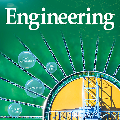Referential games offer a grounded learning environment for neural agents which accounts for the fact that language is functionally used to communicate. However, they do not take into account a second constraint considered to be fundamental for the shape of human language: that it must be learnable by new language learners. Cogswell et al. (2019) introduced cultural transmission within referential games through a changing population of agents to constrain the emerging language to be learnable. However, the resulting languages remain inherently biased by the agents' underlying capabilities. In this work, we introduce Language Transmission Engine to model both cultural and architectural evolution in a population of agents. As our core contribution, we empirically show that the optimal situation is to take into account also the learning biases of the language learners and thus let language and agents co-evolve. When we allow the agent population to evolve through architectural evolution, we achieve across the board improvements on all considered metrics and surpass the gains made with cultural transmission. These results stress the importance of studying the underlying agent architecture and pave the way to investigate the co-evolution of language and agent in language emergence studies.
翻译:参考游戏为神经剂提供了一种基础的学习环境,而神经剂正是在功能上使用语言进行交流的事实。但是,它们没有考虑到被认为是人类语言形态根本的第二个制约因素:新语言学习者必须能够学习它。 Cogswell等人(2019年)通过不断变化的代理群体在优选游戏中引进了文化传播,以限制新语言的可学习性。然而,由此产生的语言仍然受到这些代理者基本能力固有的偏见。在这项工作中,我们引入了语言传输引擎,以在代理者群体中模拟文化和建筑的演变。作为我们的核心贡献,我们从经验上表明,最佳的情况是同时考虑语言学习者的学习偏见,从而让语言和代理者共同演变。当我们允许代理者人口通过建筑演化演进时,我们全面改进所有考虑的参数,超越文化传播带来的收益。这些结果强调了研究基本代理者结构的重要性,并为调查语言和代理者在语言出现研究中的共同演变铺平了道路。



